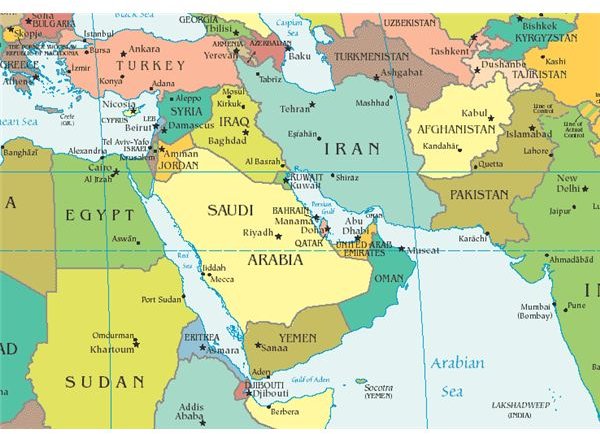
The government of Lebanon was modeled after the French government. France combined the coastal plain areas with a majority Muslim population with the mountainous areas that were predominately Christian to create the Republic of Lebanon. Lebanon: Was French mandate after World War I. Saudi Arabia to allow women to drive (September 27, 2017) The monarchs use Islamic law as their guide to rule Saudi Arabia.Ĭlick here for a timeline on the history of Saudi Arabia from the BBC The country became an absolute monarch, with Al-Saud as the king. On September 2, 1933, these conquered areas were united and declared the Kingdom of Saudi Arabia. Al-Saud conquered Riyadh in 1902 and Nejd in 1906. Al-Saud made it his mission to create a unified country on the Peninsula.

Riyadh, Nejd, and Hejaz occupied the Arabian peninsula, but were constantly fighting. Saudi Arabia: Founded in 1932 by Abd Al-Azziz bin Abd Al-Rahman Al-Saud after more than 30 years of trying to unite the Arab peninsula. Now ruled by a tenuous coatition parliament.Ĭlick here for more on Iraqi IndependenceĬlick here for a timeline of 1900-2000 in Iraq. The country was ruled by strongmen until 2003, the last being Saddam Hussein. Attained independence in 1932 as a kingdom and was declared a republic in 1958. Uprisings immediately began against the British. Iraq: Became a mandate of the United Nations after WWI, with administration belonging to Britain. Click here for an article on the South Yemen independence movement.Ĭlick here to view a short clip on a South Yemen march.Ĭlick here for a timeline of Yemen's history In 2013, South Yemen began calling for independence again, claiming the North was being neglectful. Both countries were finally unified as one in 1990 as the Republic of Yemen. This caused tension between North and South Yemen. Following the withdrawal, politicians developed Marxist policies.

In 1925, Britain recognized South Yemen's independence, but did not withdraw from the area until 1967. Britain controlled the port of Adeno since 1839. South Yemen was a protectorate of Britain. North Yemen had been ruled by the Ottoman Empire from 1849 until 1917, when it gained independence. Yemen: This nation has a questionable independence date. The Turkish Flag and the Turkish National Anthem from the Republic of Turkey Ministry of Foreign Affairs.įor more, see CIA Factbook/Turkey and United States Department of StateĬlick here for a youtube video from Khan Academy on Mustafa Kemal and the Turkish Independence War
MIDDLE EASTERN COUNTRIES FULL
Gained full independence in 1923.Ĭlick here for more on the Turkish Independence After World War I, forces led by Mustafa Kemal expelled French, Greek, Italian, and Russian forces. Nationalism had arisen through out the Ottoman Empire, which was not keeping up with social and technological developments in Europe. Turkey: Founded by Mustafa Kemal, also known as Ataturk ("father of the Turks") after the collapse of the Ottoman Empire and a three year war for independence. Independence years and short summaries of events The Sykes-Picot Agreement and the Making of the Modern Middle EastĪ Century On: Why Arabs Resent Sykes-Picot

Mapping and Explaining Middle Eastern Conflict - Interactive Armenian, Syriac, Azeri, Berber languages, Circassian, Hebrew, Kurdish, Luri and Turkish are but a few of the multitude of languages spoken in the Middle East.Focus Question: When did countries in the Middle East become independent nations and how was independence achieved? Though Arabic and Persian are the most widely spoken languages in the Middle East, there are many other languages spoken and used in the region. These include Arabs, Armenians, Assyrians-Syriacs, Azeris, Berbers, Baluch, Circassians, Habesha, Georgians, Jews, Nubians, Persians, Samaritans, and Turks. There is no universal "Middle Eastern" ethnic group, rather numerous ethnic groups comprise the Middle East. The Middle East is also home to followers of other religious groups, such as Bahà'ì, Druze, and Zoroastrianism. Home to three major world religions, Judaism, Christianity, and Islam, followers of these religions inhabit the Middle East. The Middle East is a diverse region, both religiously, ethnicially, and lingusiticity. Generally speaking, the countries of Western Asia, in addition to the Arabian Peninsula, and most of North Africa are considered part of the Middle East. Personal and political opinions sometimes cause the removal, or addition, of different countries to be classified as Middle Eastern. The Middle East is a loosely defined region of the world.


 0 kommentar(er)
0 kommentar(er)
